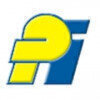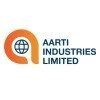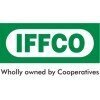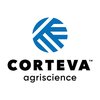Filter interviews by
Aarti Industries Process Engineer Interview Questions and Answers
7 Interview questions
Heat exchanger size is determined by flow rates, temperature changes, and heat transfer requirements.
Calculate the required heat transfer using Q = mcΔT, where Q is heat transfer, m is mass flow rate, c is specific heat, and ΔT is temperature change.
Consider the overall heat transfer coefficient (U), which depends on the materials and flow arrangement.
Use the heat exchanger effectiveness to determine the size base...
I have applied my knowledge of chemical engineering principles in designing and optimizing manufacturing processes by analyzing reaction kinetics, heat transfer, and mass transfer.
Utilizing reaction kinetics to determine optimal reaction conditions for maximum yield
Applying heat transfer principles to design efficient heat exchangers for temperature control
Optimizing mass transfer processes to improve separation e...
NPSH stands for Net Positive Suction Head in a centrifugal pump.
NPSH is a measure of how much suction pressure is required at the pump inlet to prevent cavitation.
It is important to ensure that the NPSH available (NPSHa) is greater than the NPSH required (NPSHr) for the pump to operate efficiently.
NPSH is affected by factors such as pump speed, fluid properties, and system design.
Cavitation can occur if the NPSH a...
Pumps are mechanical devices used to move fluids by converting mechanical energy into hydraulic energy.
Types of pumps: centrifugal, positive displacement, diaphragm, gear, and screw pumps.
Centrifugal pumps are commonly used in water supply systems.
Positive displacement pumps are ideal for high-viscosity fluids, like in oil extraction.
Diaphragm pumps are often used in chemical processing for their leak-proof design...
Distillation is a separation process that involves heating a liquid mixture to create vapor and then cooling the vapor to get a purified liquid.
Types of distillation include simple distillation, fractional distillation, and steam distillation.
Simple distillation is used for separating components with large boiling point differences.
Fractional distillation is used for separating components with closer boiling point...
Types of impellers in centrifugal pumps include closed, open, semi-open, and vortex.
Closed impeller: all flow enters and exits through the impeller blades
Open impeller: flow enters through the center and exits along the blades
Semi-open impeller: flow enters through the eye and exits along the blades
Vortex impeller: flow enters through the eye and exits through the periphery
Impeller selection depends on the applica...
Chemical Engineering Thermodynamics is the study of energy and its transformations in chemical processes.
It involves the analysis of heat transfer, work, and energy flow in chemical systems.
It helps in understanding the behavior of chemical reactions and the design of efficient processes.
Thermodynamics principles are used to optimize process conditions and maximize energy efficiency.
Examples include calculating he...
Aarti Industries Process Engineer Interview Experiences
6 interviews found
(3 Questions)
- Q1. What is NPSH in centrifugal pump?
- Ans.
NPSH stands for Net Positive Suction Head in a centrifugal pump.
NPSH is a measure of how much suction pressure is required at the pump inlet to prevent cavitation.
It is important to ensure that the NPSH available (NPSHa) is greater than the NPSH required (NPSHr) for the pump to operate efficiently.
NPSH is affected by factors such as pump speed, fluid properties, and system design.
Cavitation can occur if the NPSH availa...
- Q2. Types of distillation
- Ans.
Distillation is a separation process that involves heating a liquid mixture to create vapor and then cooling the vapor to get a purified liquid.
Types of distillation include simple distillation, fractional distillation, and steam distillation.
Simple distillation is used for separating components with large boiling point differences.
Fractional distillation is used for separating components with closer boiling points.
Ste...
- Q3. Types of impeller in centrifugal pump
- Ans.
Types of impellers in centrifugal pumps include closed, open, semi-open, and vortex.
Closed impeller: all flow enters and exits through the impeller blades
Open impeller: flow enters through the center and exits along the blades
Semi-open impeller: flow enters through the eye and exits along the blades
Vortex impeller: flow enters through the eye and exits through the periphery
Impeller selection depends on the application ...
I appeared for an interview before Jul 2024, where I was asked the following questions.
- Q1. How heat exchanger size
- Ans.
Heat exchanger size is determined by flow rates, temperature changes, and heat transfer requirements.
Calculate the required heat transfer using Q = mcΔT, where Q is heat transfer, m is mass flow rate, c is specific heat, and ΔT is temperature change.
Consider the overall heat transfer coefficient (U), which depends on the materials and flow arrangement.
Use the heat exchanger effectiveness to determine the size based on ...
- Q2. Detail of pump
- Ans.
Pumps are mechanical devices used to move fluids by converting mechanical energy into hydraulic energy.
Types of pumps: centrifugal, positive displacement, diaphragm, gear, and screw pumps.
Centrifugal pumps are commonly used in water supply systems.
Positive displacement pumps are ideal for high-viscosity fluids, like in oil extraction.
Diaphragm pumps are often used in chemical processing for their leak-proof design.
Gear...
- Q3. Tell me about your self
I applied via Walk-in and was interviewed before Aug 2023. There was 1 interview round.
(1 Question)
- Q1. How have you applied your knowledge of chemical engineering prociples in the design and optimization of manufacturing process
- Ans.
I have applied my knowledge of chemical engineering principles in designing and optimizing manufacturing processes by analyzing reaction kinetics, heat transfer, and mass transfer.
Utilizing reaction kinetics to determine optimal reaction conditions for maximum yield
Applying heat transfer principles to design efficient heat exchangers for temperature control
Optimizing mass transfer processes to improve separation effici...
Interview Preparation Tips
Skills evaluated in this interview
I applied via Company Website and was interviewed before Sep 2022. There were 3 interview rounds.

(2 Questions)
- Q1. 1.Give your shortly introduction.
- Q2. If you apply for process engineering position 1.He/she asking basics concepts of engineering. 2.past company which work you do 3.unit process & unit operation deeply discussion
(1 Question)
- Q1. He/she discuss your family background and salary discussion
Interview Preparation Tips
- Aspen
- Distillation
I appeared for an interview before Oct 2023, where I was asked the following questions.
- Q1. HE design calculations
- Q2. Pump hydraulics
I applied via Walk-in and was interviewed before Feb 2023. There was 1 interview round.
(2 Questions)
- Q1. Explain Chemical Engineering Thermodynamics ?
- Ans.
Chemical Engineering Thermodynamics is the study of energy and its transformations in chemical processes.
It involves the analysis of heat transfer, work, and energy flow in chemical systems.
It helps in understanding the behavior of chemical reactions and the design of efficient processes.
Thermodynamics principles are used to optimize process conditions and maximize energy efficiency.
Examples include calculating heat tr...
- Q2. Basics , thermodynamic properties , PVT diagram ,
Top trending discussions






Interview questions from similar companies

Process Engineer Interview Questions & Answers
Deccan Fine Chemicalsposted on 12 Oct 2020
(1 Question)
- Q1. Generally they ask resume oriented questions, Projects you had completed, College academics

I applied via Campus Placement and was interviewed before Mar 2022. There were 2 interview rounds.

(2 Questions)
- Q1. What is the orifice meter and different types of valves and distillation column..
- Ans.
An orifice meter is a device used to measure the flow rate of a fluid, while valves and distillation columns are important components in process engineering.
Orifice meter is a type of flow meter that uses a constriction in the flow path to create a pressure drop, which is then used to calculate the flow rate.
Different types of valves include gate valves, globe valves, ball valves, butterfly valves, and check valves. Ea...
- Q2. Types of dryers and rotameter
- Ans.
There are various types of dryers used in process engineering such as rotary, fluidized bed, spray, freeze, and vacuum dryers. Rotameter is a flow measuring device.
Rotary dryers are used for drying materials by direct contact with hot gas.
Fluidized bed dryers use hot air to suspend and fluidize the material to be dried.
Spray dryers use a nozzle to atomize the liquid feed into a fine mist which is then dried by hot air.
...
Interview Preparation Tips

Process Engineer Interview Questions & Answers
Deccan Fine Chemicalsposted on 2 Jul 2024
(2 Questions)
- Q1. Unit operations
- Q2. Pump calculations
(2 Questions)
- Q1. Situation based
- Q2. Critical thinking

I applied via Naukri.com and was interviewed before Nov 2023. There were 2 interview rounds.
(6 Questions)
- Q1. How to increase pump head without modifying existing pump?
- Ans.
To increase pump head without modifying existing pump, adjust system parameters like pipe diameter, pump speed, or impeller size.
Increase pump speed to increase head
Use a larger impeller to increase head
Reduce pipe diameter to increase head
Optimize system layout to reduce head losses
- Q2. What are different type of flow reactors?
- Q3. How to increase the existing scrubber capacity to cope up with new higher capacities?
- Ans.
To increase scrubber capacity, consider upgrading equipment, optimizing process parameters, and expanding physical space.
Upgrade existing scrubber equipment to handle higher capacities
Optimize process parameters such as flow rates and chemical dosages
Expand physical space to accommodate larger scrubber units
Consider implementing advanced technologies like automation and monitoring systems
Consult with experts in the fie...
- Q4. What are the reasons behind distillate product purity( under same column and feed and operating condistions)
- Ans.
Distillate product purity is influenced by factors such as feed composition, operating conditions, column design, and efficiency of separation processes.
Feed composition - The composition of the feed entering the distillation column will directly impact the purity of the distillate product.
Operating conditions - Factors such as temperature, pressure, and flow rates play a crucial role in determining the purity of the d...
- Q5. How do you measure boiling point of unknown liquid?
- Ans.
Boiling point of unknown liquid can be measured using a variety of methods including distillation, gas chromatography, and boiling point apparatus.
Use a distillation setup to heat the liquid and collect the vapor at different temperatures to determine the boiling point.
Perform gas chromatography to separate the components of the liquid and identify the boiling point of the unknown liquid.
Utilize a boiling point apparat...
- Q6. What is fire triangle and related question.
(4 Questions)
- Q1. Why should we hire you ?
- Q2. Prove me that you are not lazy.
- Q3. As per your resume, prove us that you are a quick learner
- Q4. What tipe of research areas that you are interested in?
- Ans.
I am interested in research areas related to sustainable energy, process optimization, and materials science.
Sustainable energy
Process optimization
Materials science
Interview Preparation Tips
- Pumps
- Basic concepts
- Experience related questions
Aarti Industries Interview FAQs
Tell us how to improve this page.
Aarti Industries Interviews By Designations
- Aarti Industries Assistant Manager Interview Questions
- Aarti Industries Office Trainee Interview Questions
- Aarti Industries Deputy Manager Interview Questions
- Aarti Industries DCS Operator Interview Questions
- Aarti Industries Executive Production Interview Questions
- Aarti Industries Process Engineer Interview Questions
- Aarti Industries Executive Interview Questions
- Aarti Industries Graduate Engineer Trainee (Get) Interview Questions
- Show more
Interview Questions for Popular Designations
- Senior Engineer Interview Questions
- Production Engineer Interview Questions
- Project Engineer Interview Questions
- Junior Engineer Interview Questions
- Associate Engineer Interview Questions
- Graduate Engineer Interview Questions
- Shift Engineer Interview Questions
- Senior Process Engineer Interview Questions
- Show more
Overall Interview Experience Rating
based on 6 interview experiences
Difficulty level
Duration
Interview Questions from Similar Companies
Aarti Industries Process Engineer Reviews and Ratings
based on 49 reviews
Rating in categories
|
Assistant Manager
708
salaries
| ₹5.6 L/yr - ₹11.5 L/yr |
|
Executive
605
salaries
| ₹3.3 L/yr - ₹7.3 L/yr |
|
Deputy Manager
602
salaries
| ₹8.1 L/yr - ₹14 L/yr |
|
Plant Operator
358
salaries
| ₹1.9 L/yr - ₹5.2 L/yr |
|
Senior Executive
351
salaries
| ₹4.5 L/yr - ₹9.3 L/yr |

UPL

Coromandel International

PI Industries

Deccan Fine Chemicals
- Home >
- Interviews >
- Aarti Industries Interview Questions
















